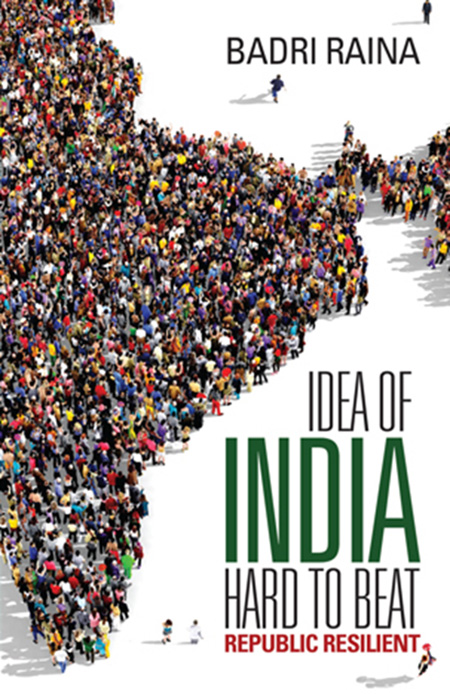However, the government’s plans to create jobs for young Indians are unlikely to be successful because these are dependent on the goodwill of big businesses in the organised sector and not small enterprises in the unorganised sector that have created employment. On the contrary, little is being done for MSMEs (micro, small and medium enterprises) who have been battered and bruised by first, the November 2016 demonetisation, then, the hurriedly implemented goods and services tax (GST) regime and also because of the ill thought-through lockdown in March 2020 in the wake of the Covid-19 pandemic.
The Finance Minister stole more than a few leaves from the pre-election manifesto of the biggest Opposition party, the Indian National Congress, while announcing schemes such as the internship programme in the country’s top companies, the employment-linked incentive programme, abolition of the “angel tax” to spur investments and not by reducing the budget allocation on implementing the scheme under the Mahatma Gandhi National Rural Employment Guarantee Act (MNREGA).
Sitharaman had earlier dismissed the Congress manifesto as a document containing recommendations that could not be implemented for lack of funds, and which would increase the fiscal deficit. It is a separate matter that the country’s central bank, the Reserve Bank of India, bailed out the government of India by transferring an unprecedented Rs 2.1 lakh crore by way of dividends.
While the Finance Minister did not mention MNREGA by name–a scheme that had been trashed by Modi in 2015 as an example of the Congress party’s failure (asafalta ka pratik) to provide jobs–today she has no choice but to acknowledge the fact that this is one scheme that has provided relief to the poor in rural areas, despite its poor implementation (notably, delayed payments and petty corruption).
The 2024-25 Budgetary allocation for MNREGA was the highest-ever at Rs 86,000 crore, the same amount that was actually spent in the previous financial year, 2023-24. The year before that, 2022-23, the actual expenditure on the MNREGA scheme was higher at over Rs 90,000 crore because of the reverse migration from urban to rural areas that took place on account of the lockdown.
As has been pointed out in an article by Asmi Sharma and Nancy Pathak in The Wire website, the latest Economic Survey of India (presented a day before the Budget) the MGNREGA scheme is being operated like a supply-based scheme, where employment is often unavailable when sought. Additionally, demand for work is not recorded on the portal when employment is provided. As a result, the actual demand for work exceeds what is shown on the Management Information System (MIS) portal, failing to reflect the true extent of rural distress.
The Survey has also stated that the expenditures on MNREGA were not accurate indicators of rural distress because of the differing capacities of specific state governments to spend on the rural employment guarantee scheme and on account of differing minimum wages in different states.
The non-government Centre for Monitoring Indian Economy (CMIE) has highlighted that youth unemployment touched a record high of 45.4 percent in 2022-23. Between 2011-12 and 2022-23, over half the men in the country and more than two-thirds of the women were categorised as “self-employed”–a euphemism for not being able to find decent jobs.
Demonetisation, the poorly-planned implementation of the GST system (whose rules have been amended more than 900 times since 2017) and the harsh lockdown following the pandemic–all resulted in small and cottage enterprises shutting down, throwing people out of their precarious jobs. According to the government’s Annual Survey of Unincorporated Enterprises, between 2006 and 2021, 24 lakh small units downed shutters resulting in the number of workers in the informal sector coming down by 1.3 crore.
The Budget has called on India’s top 500 companies to engage one crore young people by providing them an internship allowance of Rs 5,000 a month plus a one-time assistance Rs 6,000. The companies would bear the cost of training and 10 per cent of the internship allowance (or Rs 50 a month) could be paid out of tax-free CSR (corporate social responsibility) funds. In addition, employment-linked incentive schemes are aimed at benefiting 2.1 crore youth through, among other things, contributions to the employees’ provident fund organisation (EPFO).
However, as Sharma and Pathak state, the pension, economic security and welfare schemes for India’s nearly 50 crore workers in the unorganised sector have not received the same level of attention as has been given to workers in the organised sector who account for less than 10 percent of the total jobs in the country.
The government of India could start by setting its own house in order. According to data provided by the Department of Personnel and Training (DoPT), over 2.2 crore individuals applied for jobs in ministries and departments of the central government between 2014 and 2022. Of this number, only 7.22 lakh were successfully employed in positions that were vacant–in other words, only 3 jobs were created for every 1,000 persons who applied for them.
A report by Citibank India underscored the challenges in creating jobs in the formal sector of the economy and noted a decline in formal sector employment in comparison to pre-pandemic levels. Given the fact that job creation in manufacturing industry has been sluggish and that the labour force participation rate (LFPR) has declined in recent years, the India Employment Report 2024 of the International Labour Organisation (ILO) has described the country’s structural transformation as “stunted”.
According to data provided by the government’s Ministry of Statistics and Programme Implementation, the LFPR trends between 2011-12 and 2022-23 point towards “stagnant employment growth and ongoing gender and regional disparities”, a report prepared by the Congress party has highlighted.
It added: “The male participation rate in both rural and urban areas has remained stagnant. Female participation rates exhibit more significant fluctuations and lower overall levels of participation. The rural female participation rate experienced a sharp decline in the years prior to the pandemic before rising to 41.5 percent in 2022-23.
“Considering the backdrop of the pandemic, economists argue that the large-scale entry of rural women into the workforce indicates signs of rural distress, compelling them to seek employment. In comparison, the urban female participation which has remained consistently lower than rural females, has only shown a modest upward trend from 2019-20 onwards.
“The combined LFPR, reflecting both genders and regions, has shown a steep decline between 2011-12 and 2019-20, before rising in (financial year)... 2020-21, primarily driven by the surge in rural women entering the workforce. The government’sown data underscores that there has been little improvement in the overall labour participation since 2011-12”.
The same report has stated that the unemployment crisis in India “has turned deadly”. According to the Accidental Deaths and Suicides Reports prepared by the National Crime Records Bureau, between 2018 and 2022, as many as 15,851 individuals committed suicide due to unemployment.
The new proposals in the Budget are unlikely to lead to a significant rise in job creation. Providing financial incentives to the private sector for employment generation is undoubtedly important, but jobs will not be automatically created unless new investments are made and household spending picks up (from a 20-year low). Importantly, economic growth has to be evenly spread across the population and not confined to oligarchs in a country where one-third of the population of over 140 crore survives on less than Rs 100 a day.


